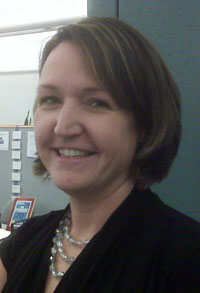'Inside Web 2.0' – A Newbie’s View

Guest editorial by Maeve Naughton

Moderated by Amy Shuen author of “Web 2.0: A Strategy Guide”, the panel attracted roughly 100 people in the audience and surprisingly the ages ranged from mid thirties to mid forties. One third of the participants worked for Web 2.0 companies, approximately 80 percent use Facebook and 99 percent use LinkedIn. The main difference between the two application uses was age – the older attendees tended not to use Facebook.
As a newbie to social media, I’d hoped to get more out of the evening. I wanted to find out about how social media tools and platforms are transforming non-social media businesses, how different tools can be used for different reasons and some “social media saved the day” examples but I got none of that. The panelists focused more on what their product does and how they generate money. However, each panelist made at least one interesting point:
Next: What are the experts saying, anyway? -->
Veys - Jajah is looking at ways to do advertising for its customers through Web 2.0. It blew my mind that one of the things they’re looking at is advertising via overlaying a ring tone. Can you image calling your friend and while you’re waiting the 5-6 seconds for them to answer, there’s an advertisement for Nike telling you to buy their new shoe? If that’s what advertising comes to, I think I’ll stick with email.
Elman - Facebook is creating an open and connected world. Elman mentioned how Web 1.0 was dictated by editors telling the world what should be seen and read. Web 2.0 has changed the way we view content because now it’s up to us, the users. Because we create, generate and use content on the Web, we determine what we want to share with the world.
Sternberg - Meebo plans on being the place for brand advertising. He mentioned how it’s important to create high engagement with a brand (ads placed at the bottom of the page stay there for about 10 minutes rather than flashing every few seconds); promoting sharing between users (once you see a Coca-Cola ad at the bottom of the page, click on the ad to play a game and then invite your friends); and use metrics to measure success (being able to determine how many times throughout a Meebo platform conversation your product/company is mentioned. Meebo hopes to be able to at some point determine how many of those mentions are positive vs. negative).
Quarles – A different kind of view on last night’s discussion. Rather than working for a particular Web 2.0 company, she works with them. She wasn’t giving an elevator pitch and wasn’t trying to get people motivated to use her product. The one comment that she made that made me go “hmmm”, was that with Web 1.0 you found things through algorithms while with Web 2.0 you find things through friends. Although pretty obvious, it was the only “ah ha” moment for me during tonight.
Their final comments/advice:
- Innovate using leaders of Web 2.0 and do something you enjoy. Essentially, build your product around what’s hot.
- Build something people love and are passionate about (Elman chuckled about this because of the recent uproar about the new Facebook platform, saying it just shows that people are passionate about it).
- Specialize and do what you’re good at, outsource what you’re not.
- Team with great people because you probably can’t do it all yourself – a good restaurant is more than a good chef.
As a newbie, I realized last night that there’s lots of information out there but that some digging must be done to find exactly what you’re seeking. No single platform is going to be the perfect fit for everyone and every business need, but social media is critical to businesses if they want to success. One of the panelists said that he recently spoke to some students and they average 2-3 hours a day watching TV and 7-9 hours a day online. The old school way of advertising on TV isn’t going to work anymore. You have to connect with others online and it doesn’t matter if it’s via a blog, Twitter, Facebook, LinkedIn or instant messaging. Just connect!
Maeve Naughton has been focused on customer references for near a decade and has been responsible for creating and managing programs within technology companies. She has worked with small customers up to Fortune 50 customers for media opportunities, marketing opportunities such as press releases and case studies, as well as sales and analyst references. Read more of Maeve's thoughts at Customer Reference Programs.